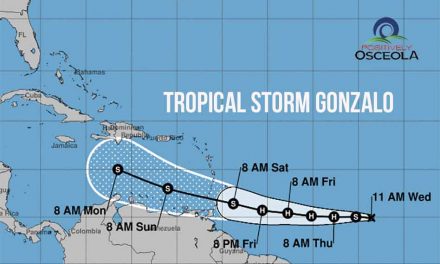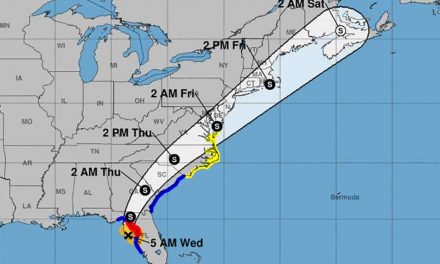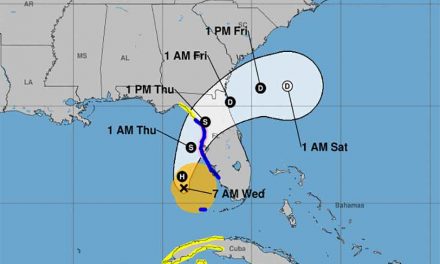Hurricane Beryl is rapidly approaching the southeastern Caribbean, and government officials have urged residents to seek shelter from the dangerous Category 3 storm.
Beryl is expected to make landfall in the Windward Islands on Monday morning. Hurricane warnings have been issued for Barbados, St. Lucia, Grenada, Tobago, and St. Vincent and the Grenadines.
“This is a very dangerous situation,” warned the U.S. National Hurricane Center in Miami, stating that Beryl is forecast to bring life-threatening winds and storm surges.
As of early Monday, Beryl was centered about 110 miles (175 kilometers) south-southeast of Barbados, with maximum sustained winds of 120 mph (195 kph), moving west at 20 mph (31 kph). The compact storm has hurricane-force winds extending 30 miles (45 kilometers) from its center.
A tropical storm warning is in effect for Martinique and Trinidad, while a tropical storm watch has been issued for Dominica, Haiti’s entire southern coast, and from Punta Palenque in the Dominican Republic west to the border with Haiti.
Beryl initially strengthened into a Category 3 hurricane on Sunday morning, becoming the first major hurricane east of the Lesser Antilles on record for June, according to Philip Klotzbach, a hurricane researcher at Colorado State University.
Remarkably, Beryl took only 42 hours to strengthen from a tropical depression to a major hurricane, a feat accomplished only six other times in Atlantic hurricane history. It then gained even more power, becoming the earliest Category 4 Atlantic hurricane on record, surpassing Hurricane Dennis, which achieved Category 4 status on July 8, 2005, according to hurricane specialist Michael Lowry.
The last strong hurricane to hit the southeastern Caribbean was Hurricane Ivan in 2004, which caused catastrophic damage in Grenada as a Category 3 storm.
Forecasters predict a life-threatening storm surge of up to 9 feet (3 meters) in areas where Beryl makes landfall, with 3 to 6 inches (7.6 to 15 centimeters) of rain expected for Barbados and nearby islands, and potentially up to 10 inches (25 centimeters) in some areas.
The unusually warm waters of the deep Atlantic, with the highest ocean heat content on record for this time of year, are fueling Beryl, said Brian McNoldy, a tropical meteorology researcher at the University of Miami.




















